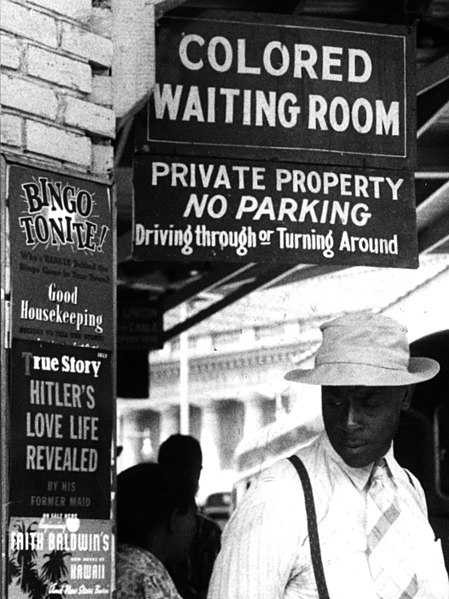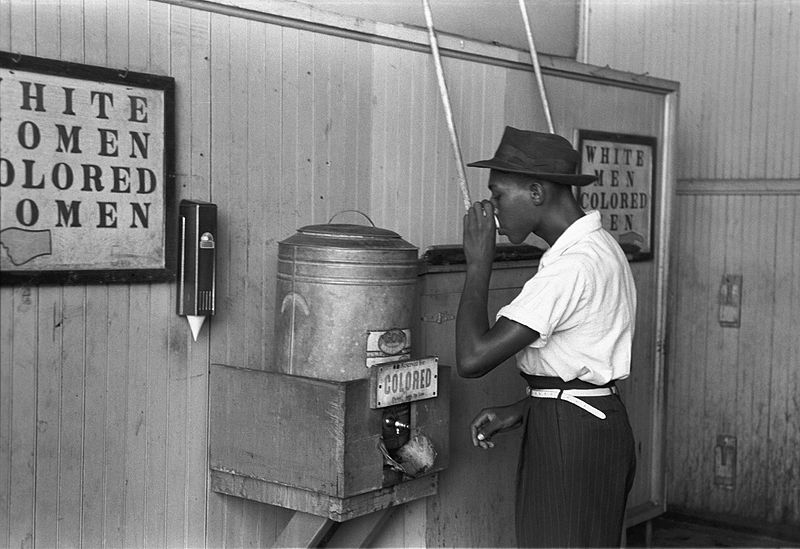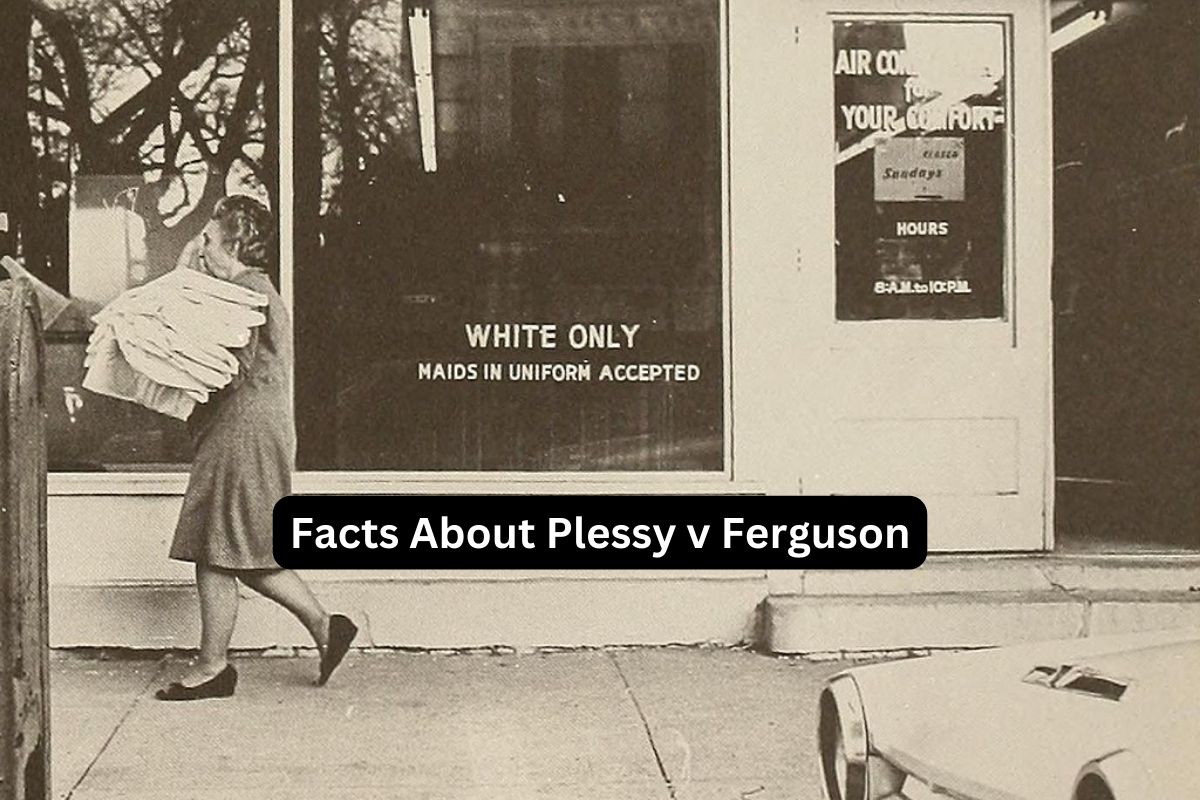Plessy v. Ferguson was a landmark United States Supreme Court case decided in 1896. Originating in Louisiana, the case revolved around a state law that mandated racial segregation on trains.
Homer Plessy, a man of mixed race, intentionally violated the law to challenge its constitutionality.
The case reached the Supreme Court, which upheld the segregation law and established the “separate but equal” doctrine. This legal doctrine provided a basis for widespread racial segregation and discrimination in the United States for several decades.
However, the decision in Plessy v. Ferguson was eventually overturned in 1954 by the Supreme Court’s ruling in Brown v. Board of Education, marking a significant milestone in the fight against racial segregation.
Plessy v Ferguson Facts
1. Plessy v. Ferguson was a landmark United States Supreme Court case decided in 1896
Plessy v. Ferguson was a landmark United States Supreme Court case decided in 1896. The case is significant because it established the legal doctrine of “separate but equal” and had a lasting impact on racial segregation in the United States.
2. The case originated in Louisiana and centered around a law that required racial segregation on trains
The case originated in Louisiana and specifically focused on a law passed in 1890 known as the “Separate Car Act.” This law required separate train cars for white and non-white passengers.
Also Read: Brown vs Board of Education Facts
It mandated that African Americans were to be seated in designated “colored” cars, while white passengers occupied the “whites-only” cars.

3. Homer Plessy, who was seven-eighths Caucasian and one-eighth African American, intentionally violated the segregation law by sitting in a “whites-only” train car
Homer Plessy, the plaintiff in the case, was a man of mixed race who purposely violated the segregation law to challenge its constitutionality.
Plessy, who had predominantly Caucasian ancestry but was considered legally non-white due to Louisiana’s “one-drop rule,” boarded a train and intentionally sat in a “whites-only” car.
He was subsequently arrested for his actions, leading to the legal proceedings that culminated in the Supreme Court case.
4. Plessy’s arrest and subsequent trial led to the case being brought before the Supreme Court
Plessy’s arrest and subsequent trial led to the case being brought before the Supreme Court. After being charged with violating the Separate Car Act, Plessy pleaded not guilty and argued that the law was unconstitutional under the Thirteenth and Fourteenth Amendments.
The case eventually made its way to the Supreme Court to determine the constitutionality of racial segregation laws.
5. The Supreme Court, in a 7-1 decision, upheld the constitutionality of the segregation law and established the “separate but equal” doctrine
In 1896, the Supreme Court issued its decision in Plessy v. Ferguson. The Court, in a 7-1 ruling, upheld the constitutionality of the Louisiana segregation law. Justice Henry Billings Brown wrote the majority opinion, which became known as the “separate but equal” doctrine.
The Court held that as long as the separate facilities provided for different races were equal in quality, they did not violate the Fourteenth Amendment’s Equal Protection Clause.
6. The majority opinion, written by Justice Henry Billings Brown, argued that segregation did not violate the Fourteenth Amendment as long as the separate facilities were equal in quality
The majority opinion in Plessy v. Ferguson argued that racial segregation did not imply the inferiority of African Americans and that the Fourteenth Amendment did not demand social equality.
The Court maintained that as long as the facilities were equal, the state had the power to enforce segregation laws. This ruling allowed for the widespread implementation of segregation across various public facilities, including transportation, schools, and public accommodations.
These facts highlight the pivotal role of the Supreme Court in establishing the legal framework for segregation through the “separate but equal” doctrine.
This ruling had a profound impact on the lives of African Americans, as it legitimized racial discrimination and provided a legal basis for the widespread implementation of segregation laws and policies across the United States.

7. The lone dissenter in the case was Justice John Marshall Harlan
The lone dissenter in the Plessy v. Ferguson case was Justice John Marshall Harlan. In his dissenting opinion, Justice Harlan argued that the Constitution should be color-blind and that the segregation law violated the principle of equal protection under the law.
He famously wrote, “Our Constitution is color-blind and neither knows nor tolerates classes among citizens.” Despite Justice Harlan’s powerful dissent, the majority opinion prevailed, shaping the course of legal segregation for decades to come.
8. The “separate but equal” doctrine established by Plessy v. Ferguson became the legal basis for racial segregation throughout the United States
The “separate but equal” doctrine established by Plessy v. Ferguson became the legal foundation for racial segregation throughout the United States.
It provided a justification for discriminatory practices and policies that perpetuated racial inequality and denied African Americans equal opportunities and access to public facilities, education, housing, and more.
9. The decision in Plessy v. Ferguson was widely criticized and contributed to the institutionalization of racial discrimination
The decision in Plessy v. Ferguson was met with widespread criticism and opposition. Many civil rights activists, African American leaders, and advocates for racial equality condemned the ruling.
They argued that separate facilities could never truly be equal, and that the decision further entrenched racial discrimination and social divisions in American society.
10. Plessy v. Ferguson was eventually overturned by the Supreme Court in the landmark case Brown v. Board of Education in 1954
Plessy v. Ferguson was eventually overturned by the Supreme Court in the landmark case Brown v. Board of Education in 1954. The Court, in a unanimous decision, declared that separate educational facilities were inherently unequal and violated the Equal Protection Clause of the Fourteenth Amendment.
The Brown v. Board of Education decision marked a significant turning point in the fight against racial segregation, challenging the “separate but equal” doctrine established by Plessy v. Ferguson and paving the way for the desegregation of schools and other public spaces.
These facts underscore the controversial nature of the Plessy v. Ferguson decision and its long-lasting implications.
While it took several decades and further legal battles to fully dismantle segregation, the eventual overturning of Plessy v. Ferguson in Brown v. Board of Education marked a critical step forward in the struggle for civil rights and equality in the United States.
